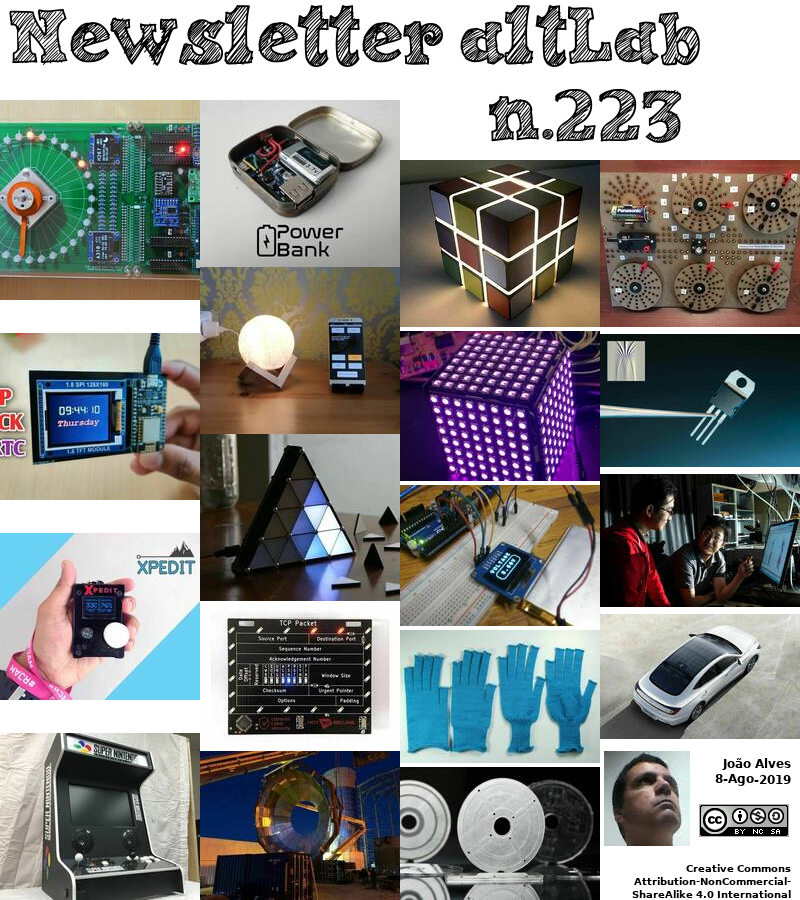2019-08-08 - Nº 223
Editorial
Esta é a Newsletter Nº 223 que se apresenta com o mesmo formato que as anteriores. Se gostar da Newsletter partilhe-a!
Todas as Newsletters encontram-se indexadas no link.
Esta Newsletter tem os seguintes tópicos:
Faz hoje anos que nascia, em 1901, Ernest Lawrence. Este físico norte-americano recebeu o Prémio Nobel de Física de 1939 pela sua invenção do ciclotrão, o primeiro dispositivo para a produção de partículas de alta energia. O seu primeiro dispositivo, construído em 1930, usava um íman de 10 cm. Ele acelerou partículas dentro de um reciclador em alto vácuo entre os pólos de um electroíman para confinar o feixe a uma espiral, enquanto uma alta voltagem de corrente alternada aumentou a energia da partícula. Os modelos maiores criados posteriormente criaram feixes de 8 x 104 eV. Ao colidir partículas com núcleos atómicos, ele produziu novos elementos e radioactividade artificial. Em 1940, ele tinha conseguido criar plutónio e neptúnio. Ele ampliou o uso da radiação atómica nos campos da biologia e da medicina. O elemento 103 foi nomeado Laurêncio como um tributo a ele.
Faz também anos hoje que nascia, em 1931, Roger Penrose. Este Matemático e físico teórico britânico na década de 1960 calculou muitas das características básicas dos buracos negros. Penrose fez contribuições para a física matemática da relatividade geral e cosmologia. Ele recebeu vários prémios, incluindo o Wolf Prize de 1988 pela física, que compartilhou com Stephen Hawking para os teoremas de singularidade de Penrose-Hawking.
Por fim, faz anos hoje que nascia, em 1938, Jack Edward Baldwin. Este químico britânico criou as Regras de Baldwin para reacções de fecho de anéis em química orgânica. Com base em evidências empíricas, estas regras consideram as taxas relativas (ou favoravelmente) do fecho do anel em compostos ali-cíclicos. Durante seu Ph.D. estudos no Imperial College, em Londres, ele trabalhou para o prémio Nobel, Sir Derek Barton. Após seu treino como químico orgânico sintético, ele manteve um interesse no desafio da síntese de compostos naturais complexos. Depois de alguns anos no M.I.T. (1969-1978), Baldwin passou a maior parte de sua carreira de pesquisa em laboratórios em Oxford. Ele foi condecorado em 1997 por suas contribuições para a química orgânica.
Nesta semana que passou ficámos a saber, pelas palavras do CEO da SpaceX, Elon Musk que o primeiro protótipo orbital do veículo Starship para colonizar Marte deve estar pronto para voar em breve. A SpaceX está a construir dois transportadores orbitais de Starship - um pouco de competição dentro da companhia com a intenção de melhorar o desenho final da nave espacial. O protótipo conhecido como Mk1 está a ser desenvolvido nas instalações da empresa em Boca Chica, Texas, enquanto o Mk2 está a ser construído na Space Coast da Flórida. As naves Mk1 e Mk2 são diferentes do protótipo basico conhecido como Starhopper, que recentemente fez seu primeiro lançamento livre em Boca Chica. O Starhopper tem apenas um motor Raptor e permanecerá firmemente dentro da atmosfera da Terra durante a fase de testes. Mk1 e Mk2, por outro lado, terão pelo menos três Raptors e foram projectados para alcançar a órbita, disse Musk. A versão finalizada de 100 passageiros do Starship terá seis Raptors. Super Heavy, o foguete gigante que lançará o Starship na superfície da Terra, terá 35 desses motores de última geração, disse Musk recentemente.
Na Newsletter desta semana apresentamos diversos projetos de maker.
 João Alves ([email protected])
João Alves ([email protected])
O conteúdo da Newsletter encontra-se sob a licença  Creative Commons Attribution-NonCommercial-ShareAlike 4.0 International License.
Creative Commons Attribution-NonCommercial-ShareAlike 4.0 International License.
Novidades da Semana
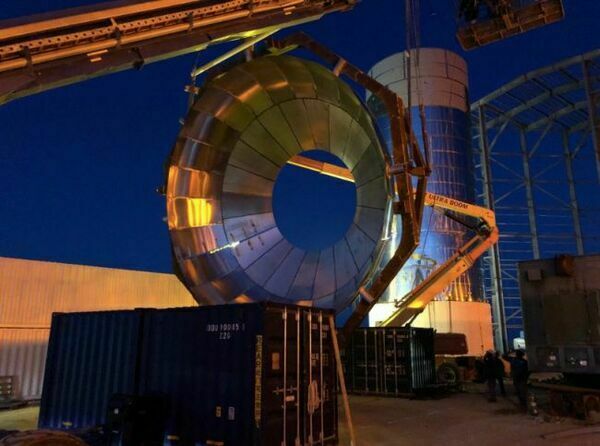
SpaceX's Mars-Colonizing 'Starship' Prototype Coming Together in Texas
"The first orbital prototype of SpaceX's Mars-colonizing Starship vehicle should be ready to fly soon, company founder and CEO Elon Musk said. SpaceX is building two orbital Starship forerunners — a bit of intracompany competition intended to improve the design of the final spacecraft. The prototype known as Mk1 is coming together at the company's facility in Boca Chica, Texas, whereas Mk2 is being built on Florida's Space Coast. The Mk1 and Mk2 craft are different from the stripped-down prototype known as Starhopper, which recently made its first untethered hop at Boca Chica. Starhopper has just one Raptor engine and will stay firmly within Earth's atmosphere throughout the testing phase. Mk1 and Mk2, on the other hand, will feature at least three Raptors and are designed to reach orbit, Musk has said." [...]
Outras Notícias

Alibaba sketches world's 'fastest' 'open-source' RISC-V processor yet: 16 cores, 64-bit, 2.5GHz, 12nm, out-of-order exec
"Chinese tech giant Alibaba claims to have designed the fastest RISC-V processor to date, and reckons it will open source at least some of the blueprints for others to use. The chip was unveiled this week at Alibaba's Cloud Summit in the Middle Kingdom, though details are curiously thin. Word reaches us of the development, though, amid China's soaring interest in the fledgling RISC-V, which at its heart is an open-source instruction set architecture backed by Google, Nvidia, Western Digital, Qualcomm, Alibaba, and others. RISC-V is exciting for China because it allows the nation's eggheads to access, improve, and extend a bunch of the West's processor technology without having to worry about any future US trade sanctions, thanks to the architecture family's openly available materials. Everything you need to start experimenting with the tech and improving it – the ISA documentation, CPU cores, and software stacks – is already out there over the internet, and it's too late to cut that knowledge off. While the RISC-V ISA is open source, implementations of its CPU cores don't have to be – and yet, there are a range of cores available to download, evaluate, and drop into FPGAs, ASICs, or system-on-chips, for free." [...]

Toshiba Memory Unveils New Technology for Removable NVMe Memory Devices with Groundbreaking Size to Performance Ratio
"XFMEXPRESS™ Technology Redefines Storage for Ultra-Mobile and Embedded Applications with a Powerful Combination of Size, Performance and Serviceability Toshiba Memory Corporation, the world leader in memory solutions, today announced XFMEXPRESS™, a new technology for removable PCIe® attached, NVMe™ memory devices. With a new form factor and an innovative connector, XFMEXPRESS technology delivers an unparalleled combination of features designed to revolutionize ultra-mobile PCs, IoT devices and various embedded applications. Recognizing the need for a new class of removable storage, Toshiba Memory leveraged its extensive background in single package memory designs to develop XFMEXPRESS technology and offer these key features: Game-Changing Serviceability Putting serviceability front and center, XFMEXPRESS technology enables a new category of small memory devices and SSDs that are easy to service or upgrade. By pairing a robust, compact package with removable memory functionality and flexibility, XFMEXPRESS technology will help diminish technical barriers and design constraints. Mobile-Friendly Footprint The XFMEXPRESS form factor’s no-compromise size and low profile (14mm x 18mm x 1.4mm) offers a 252mm2 footprint1, optimizing the mounting space for ultra-compact host devices without sacrificing performance or serviceability. With this minimized z-height, the XFMEXPRESS form factor is excellent for thin and light notebooks and creates new design possibilities for next-generation applications and systems." [...]

Hyundai launches first car with solar roof charging system
"Eco-friendly solar roof system charges vehicle’s battery using solar panels even while driving The solar roof system improves fuel efficiency while preventing battery discharge and reducing CO2 emissions With the technology, 30 to 60 per cent of a car’s battery can be charged via solar energy Hyundai Motor is launching its first car with a solar roof charging system. This groundbreaking eco-friendly technology will provide vehicles with additional electrical power, as well as increasing fuel efficiency and driving range. Hyundai Motor’s solar roof charging system makes its debut on the New Sonata Hybrid. The system supports the vehicle’s electric power source, improving fuel efficiency and reducing CO2 emissions. In the coming years, Hyundai will roll out the technology to other vehicles across its range. This is the latest application of a smart solution from Hyundai advancing the mobility industry towards a more sustainable future." [...]
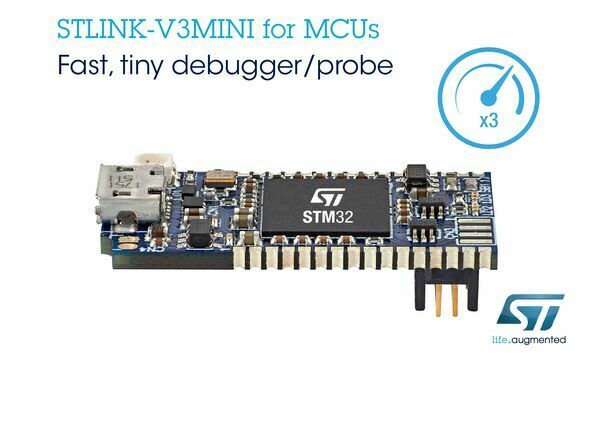
Compact, Convenient, STLINK-V3MINI Debug Probe from STMicroelectronics Accelerates STM32 Application Development
"The STLINK-V3MINI probe, new from STMicroelectronics, combines the enhanced features of STLINK-V3SET with standalone simplicity for faster programming and ease of use, for an even more affordable price, at just $9.75. The compact, portable probe can be used anywhere to upload and debug applications on STM32* microcontrollers. It leverages ST’s 14-pin STDC14 debug cable to support enhanced features including Virtual COM Port (VCP). VCP brings extra convenience and flexibility, such as easily observing runtime data on the host PC for faster, clearer debugging. Mass-storage support is another feature of STLINK-V3MINI that makes developers’ lives easier by enabling the uploading of files directly through the probe with a simple drag and drop to quickly trial new ideas or run various demo applications. Moreover, STLINK-V3MINI comes with reference files for 3D printing that let owners create their own customized casing for the probe." [...]
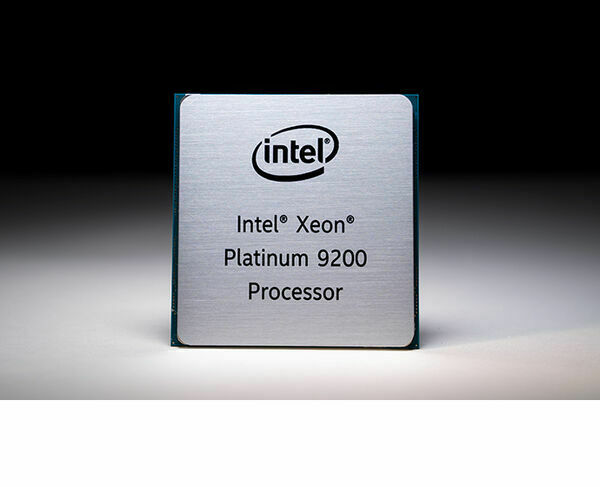
Next-generation Intel Xeon Scalable Processors to Deliver Breakthrough Platform Performance with up to 56 Processor Cores
"Intel today announced its next-generation Intel® Xeon® Scalable processor family (codename Cooper Lake) will offer customers up to 56 processor cores per socket and built-in AI training acceleration in standard socketed Intel Xeon Scalable processor offerings with availability starting in the first half of 2020. The breakthrough platform performance delivered within the high-core-count Cooper Lake processors will leverage the capabilities built into the Intel® Xeon® Platinum 9200 series, which today is gaining momentum among the world’s most demanding HPC and AI customers, including HLRN*, Advania*, and others. “We are excited about the early customer deployments of the Intel Xeon Platinum 9200 series that we introduced as part of our 2nd Generation Intel Xeon Scalable processor family. Bringing a 56-core processor into our mainline Intel Xeon Scalable processor family in the next generation will further expand our ability to address customer needs for the highest levels of performance in artificial intelligence, high performance computing and high density infrastructure.” –Lisa Spelman, vice president and general manager of Data Center Marketing, Intel Corporation What This Processor Will Offer:The next-generation Intel Xeon Scalable processor platform (codename Cooper Lake) will deliver twice the processor core count (up to 56 cores), higher memory bandwidth, and higher AI inference and training performance compared to the standard Intel Xeon Platinum 8200 platforms. Cooper Lake will be the first x86 processor to deliver built-in AI training acceleration through new bfloat16 support added to Intel® Deep Learning Boost® (Intel® DL Boost®). Cooper Lake will have platform compatibility with the upcoming 10nm Ice Lake processor." [...]
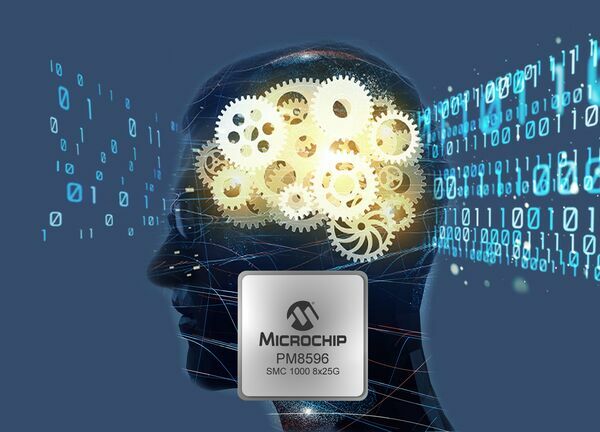
Microchip Enters Memory Infrastructure Market with Serial Memory Controller for High-performance Data Center Computing
"SMC 1000 8x25G enables high memory bandwidth required by next-generation CPUs and SoCs for AI and machine learning As the computational demands of artificial intelligence (AI) and machine learning workloads accelerate, traditional parallel attached DRAM memory has presented a major roadblock for next-generation CPUs, which require an increased number of memory channels to deliver more memory bandwidth. Microchip Technology Inc. (Nasdaq: MCHP) today announced an expanded data center portfolio and its entrance into the memory infrastructure market with the industry’s first commercially available serial memory controller. The SMC 1000 8x25G enables CPUs and other compute-centric SoCs to utilize four times the memory channels of parallel attached DDR4 DRAM within the same package footprint. Microchip’s serial memory controllers deliver higher memory bandwidth and media independence to these compute-intensive platforms with ultra-low latency. As the number of processing cores within CPUs has risen, the average memory bandwidth available to each processing core has decreased because CPU and SoC devices cannot scale the number of parallel DDR interfaces on a single chip to meet the needs of the increasing core count. The SMC 1000 8x25G interfaces to the CPU via 8-bit Open Memory Interface (OMI)-compliant 25 Gbps lanes and bridges to memory via a 72-bit DDR4 3200 interface." [...]
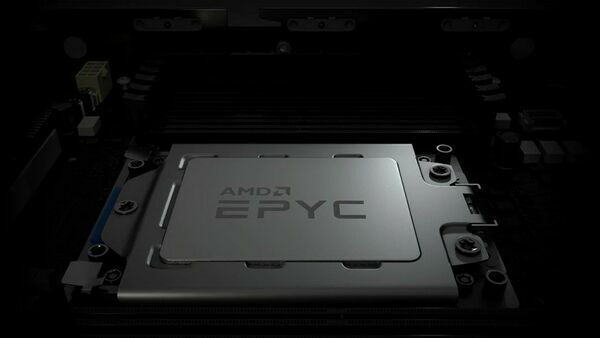
2nd Gen AMD EPYC™ Processors Set New Standard for the Modern Datacenter with Record-Breaking Performance and Significant TCO Savings
"At a launch event today, AMD (NASDAQ: AMD) was joined by an expansive ecosystem of datacenter partners and customers to introduce the 2nd Generation AMD EPYC™ family of processors that deliver performance leadership across a broad number of enterprise, cloud and high-performance computing (HPC) workloads. 2nd Gen AMD EPYC™ processors feature up to 64 “Zen 2” cores in leading-edge 7nm process technology to deliver record-setting performance while helping reduce total cost of ownership (TCO) by up to 50% across numerous workloads4. At the event, Google and Twitter announced new 2nd Gen AMD EPYC processor deployments and HPE and Lenovo announced immediate availability of new platforms. “Today, we set a new standard for the modern datacenter with the launch of our 2nd Gen AMD EPYC processors that deliver record-setting performance and significantly lower total cost of ownership across a broad set of workloads,” said Dr. Lisa Su, president and CEO, AMD. “Adoption of our new leadership server processors is accelerating with multiple new enterprise, cloud and HPC customers choosing EPYC processors to meet their most demanding server computing needs. 2nd Gen EPYC Processors Expand the AMD Datacenter Customer and Partner Ecosystem At the launch event, several customers and partners joined AMD on stage to discuss new AMD EPYC processor offerings: Google announced it has deployed 2nd Gen AMD EPYC processors in its internal infrastructure production datacenter environment and in late 2019 will support new general-purpose machines powered by 2nd Gen AMD EPYC processors on Google Cloud Compute Engine as well; Twitter announced it will deploy 2nd Gen AMD EPYC processors across its datacenter infrastructure later this year, reducing TCO by 25%; Microsoft announced a limited preview of new Azure virtual machines for general purpose applications, as well as preview signup for cloud-based remote desktops and HPC workloads based on 2nd Gen AMD EPYC processors today; HPE announced continued support of the AMD EPYC processor family with plans to triple their AMD-based portfolio with a broad range of 2nd Gen AMD EPYC processor-based systems, including the HPE ProLiant DL385 and HPE ProLiant DL325 servers; Cray announced The Air Force Weather Agency will be using a Cray Shasta system with 2nd Gen AMD EPYC processors to provide comprehensive terrestrial and space weather information to the U.S. Air Force and Army; Lenovo announced new solutions that are specifically built to take advantage of the full range of enhanced capabilities found in the 2nd Gen AMD EPYC processors." [...]
Ciência e Tecnologia
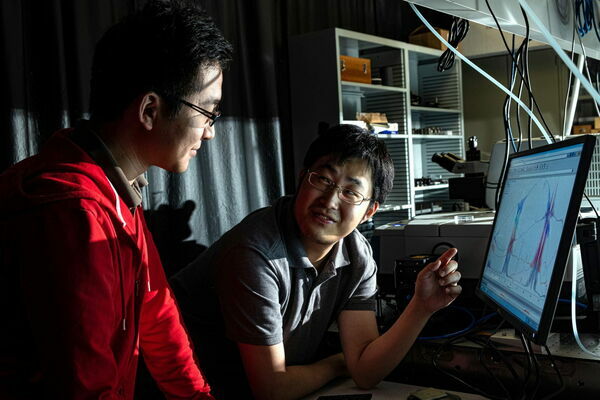
Rice device channels heat into light
"Carbon nanotube films created at Rice University enable method to recycle waste heat The ever-more-humble carbon nanotube may be just the device to make solar panels – and anything else that loses energy through heat – far more efficient. Rice University scientists are designing arrays of aligned single-wall carbon nanotubes to channel mid-infrared radiation (aka heat) and greatly raise the efficiency of solar energy systems. A Rice University simulation shows an array of cavities patterned into a film of aligned carbon nanotubes. When optimized, the film absorbs thermal photons and emits light in a narrow bandwidth that can be recycled as electricity. Illustration by Chloe Doiron Gururaj Naik and Junichiro Kono of Rice’s Brown School of Engineering introduced their technology in ACS Photonics. Their invention is a hyperbolic thermal emitter that can absorb intense heat that would otherwise be spewed into the atmosphere, squeeze it into a narrow bandwidth and emit it as light that can be turned into electricity." [...]
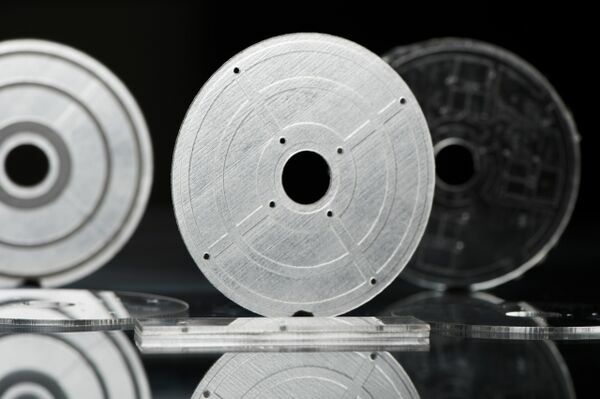
Scientists look to synthetic biology and 3-D printing for life support in space
"Do-it-yourself bio and maker communities can help NASA meet needs of long-distance missions. As NASA gears up to send humans back to the moon or even to Mars, they'll need to figure out how to keep these humans healthy and safe, far away from the resource-abundant Earth. It won't be feasible to pack everything they may need over the course of the mission, and resupply missions like those that keep the International Space Station (ISS) stocked will be prohibitively expensive and lengthy. What these astronauts can pack are Earth's unique renewable resource: cells. Cells of fungi and bacteria, for example, can be reprogrammed with synthetic DNA to produce specific materials, like bioplastics. These materials can then be fed into 3-D printers to manufacture things the astronauts may need during spaceflight — everything from hardware and medical devices to medicine and food." [...]
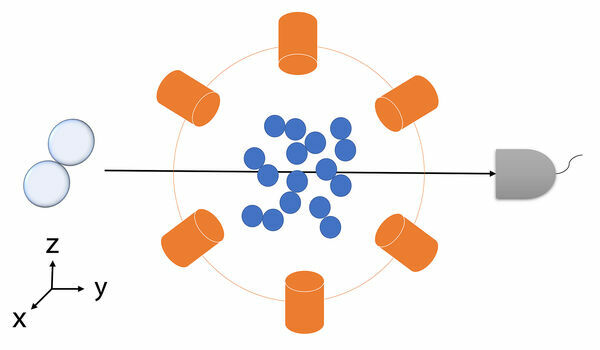
Quantum entanglement in chemical reactions? Now there’s a way to find out
"Scientists have long suspected that a quantum phenomenon might play a role in photosynthesis and other chemical reactions of nature, but don’t know for sure because such a phenomenon is so difficult to identify. Purdue University researchers have demonstrated a new way to measure the phenomenon of entanglement in chemical reactions – the ability of quantum particles to maintain a special correlation with each other over a large distance. Uncovering exactly how chemical reactions work could bring ways to mimic or re-create them in new technologies, such as for designing better solar energy systems. The study, published on Friday (Aug. 2) in Science Advances, generalizes a popular theorem called “Bell’s inequality” to identify entanglement in chemical reactions. In addition to theoretical arguments, the researchers also validated the generalized inequality through a quantum simulation. “No one has experimentally shown entanglement in chemical reactions yet because we haven’t had a way to measure it." [...]

Is your Supercomputer Stumped? There May Be a Quantum Solution
"Some math problems are so complicated that they can bog down even the world’s most powerful supercomputers. But a wild new frontier in computing that applies the rules of the quantum realm offers a different approach. A new study led by a physicist at Lawrence Berkeley National Laboratory (Berkeley Lab), published in the journal Scientific Reports, details how a quantum computing technique called “quantum annealing” can be used to solve problems relevant to fundamental questions in nuclear physics about the subatomic building blocks of all matter. It could also help answer other vexing questions in science and industry, too. Seeking a quantum solution to really big problems “No quantum annealing algorithm exists for the problems that we are trying to solve,” said Chia Cheng “Jason” Chang, a RIKEN iTHEMS fellow in Berkeley Lab’s Nuclear Science Division and a research scientist at RIKEN, a scientific institute in Japan. “The problems we are looking at are really, really big,” said Chang, who led the international team behind the study, published in the Scientific Reports journal." [...]
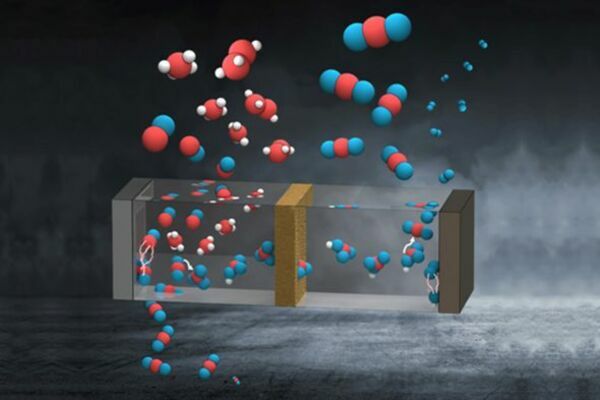
Clearing up the ‘dark side’ of artificial leaves
"While artificial leaves hold promise as a way to take carbon dioxide — a potent greenhouse gas — out of the atmosphere, there is a “dark side to artificial leaves that has gone overlooked for more than a decade,” according to Meenesh Singh, assistant professor of chemical engineering in the University of Illinois at Chicago College of Engineering. Artificial leaves work by converting carbon dioxide to fuel and water to oxygen using energy from the sun. The two processes take place separately and simultaneously on either side of a photovoltaic cell: the oxygen is produced on the “positive” side of the cell and fuel is produced on the “negative” side. Singh, who is the corresponding author of a new paper in ACS Applied Energy Materials, says that current artificial leaves are wildly inefficient. They wind up converting only 15% of the carbon dioxide they take in into fuel and release 85% of it, along with oxygen gas, back to the atmosphere. “The artificial leaves we have today aren’t really ready to fulfill their promise as carbon capture solutions because they don’t capture all that much carbon dioxide, and in fact, release the majority of the carbon dioxide gas they take in from the oxygen-evolving ‘positive’ side,” Singh said." [...]
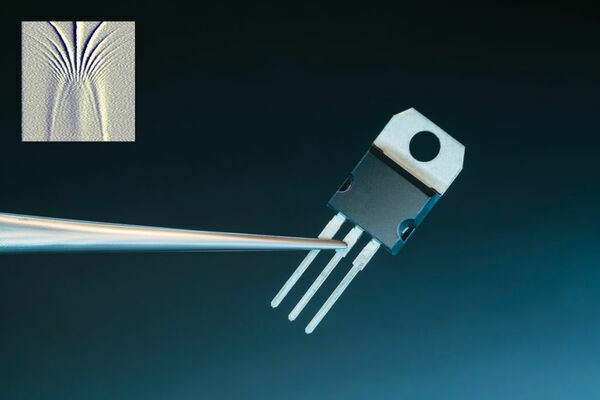
Quantum interferometry demonstrated in silicon at more practical temperatures
"A silicon-based transistor that displays quantum interference effects at useful temperatures paves the way for highly sensitive sensors Using a silicon-based transistor similar to those found in everyday electronics, RIKEN researchers have produced a functional quantum ‘qubit’—the quantum equivalent of bits used in conventional computers—that operates above the extremely low temperatures typically needed to observe quantum interference effects1. The study breaks open the exploration of quantum interference to enable research using standard materials and techniques at more accessible temperatures. Many highly sensitive measurement techniques are based on monitoring the interference of waves. The most well-known example is the detection of extremely weak gravitational waves generated by colliding neutron stars and black holes using the interference between two laser beams that are several kilometers long. Many scientists are working on extending this technique to the wave functions of quantum objects since this would permit much more sensitive sensing than is possible using classical waves. A promising system for achieving such quantum interferometry is silicon because researchers can draw on the many decades of research and development that have gone into conventional silicon-based electronics and integrated circuits." [...]
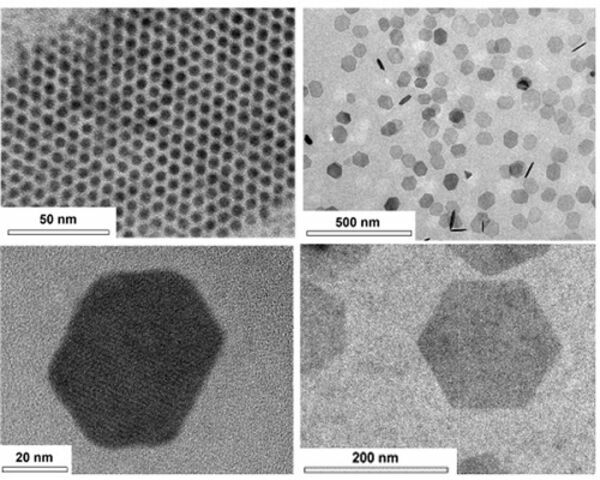
Synthesizing Single-Crystalline Hexagonal Graphene Quantum Dots
"A KAIST team has designed a novel strategy for synthesizing single-crystalline graphene quantum dots, which emit stable blue light. The research team confirmed that a display made of their synthesized graphene quantum dots successfully emitted blue light with stable electric pressure, reportedly resolving the long-standing challenges of blue light emission in manufactured displays. The study, led by Professor O Ok Park in the Department of Chemical and Biological Engineering, was featured online in Nano Letters on July 5. Graphene has gained increased attention as a next-generation material for its heat and electrical conductivity as well as its transparency. However, single and multi-layered graphene have characteristics of a conductor so that it is difficult to apply into semiconductor. Only when downsized to the nanoscale, semiconductor’s distinct feature of bandgap will be exhibited to emit the light in the graphene." [...]
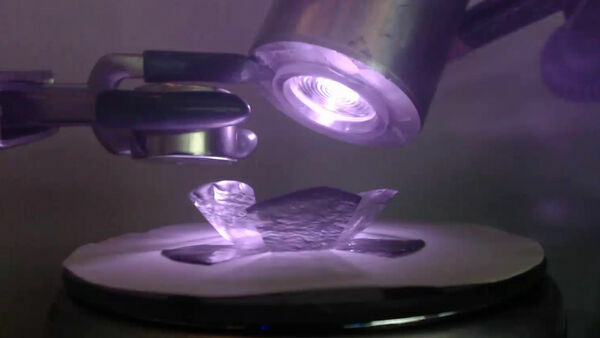
Technique Uses Magnets, Light to Control and Reconfigure Soft Robots
"Researchers from North Carolina State University and Elon University have developed a technique that allows them to remotely control the movement of soft robots, lock them into position for as long as needed and later reconfigure the robots into new shapes. The technique relies on light and magnetic fields. “We’re particularly excited about the reconfigurability,” says Joe Tracy, a professor of materials science and engineering at NC State and corresponding author of a paper on the work. “By engineering the properties of the material, we can control the soft robot’s movement remotely; we can get it to hold a given shape; we can then return the robot to its original shape or further modify its movement; and we can do this repeatedly. All of those things are valuable, in terms of this technology’s utility in biomedical or aerospace applications.” For this work, the researchers used soft robots made of a polymer embedded with magnetic iron microparticles. Under normal conditions, the material is relatively stiff and holds its shape." [...]
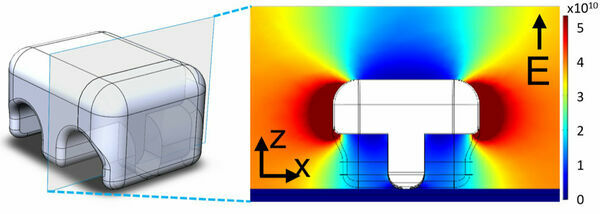
A new concept for self-assembling micromachines
"Polarisable microrobots components can be designed to find each other in an electric field In the future, designers of micromachines can utilize a new effect. A team led by researchers from the Max Planck Institute for Intelligent Systems in Stuttgart have presented a concept that enables the components of microvehicles, microrotors and micropumps to assemble themselves in an electric field. The new concept may help to construct medical microrobots for use in the human body or to fit laboratory devices on a microchip. Approximately half the thickness of a human hair, microvehicles could in the future deliver drugs directly to the source of disease, help with diagnosis and take minimally invasive surgery to the next level. However, miniaturization is also of interest for medical, biological and chemical laboratories. With a laboratory on a microchip, medical or environmental chemistry analyses that currently require a room full of equipment could also be performed on the move." [...]
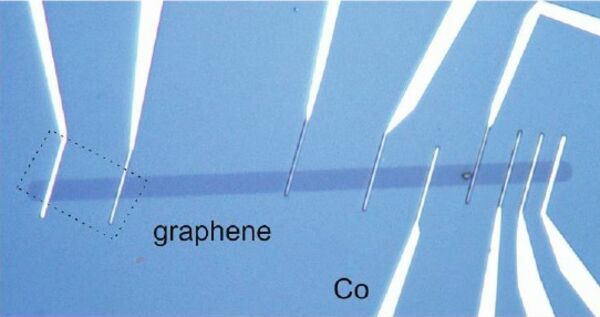
A modified device fabrication process achieves enhanced spin transport in graphene
"Researchers from the ICN2 Physics and Engineering of Nanodevices Group have proposed a modified graphene-based nanodevice fabrication technique that has increased up to three times the spin lifetime and relaxation length compared to previous work of the same kind. The work was fruit of the collaboration with Imec and K.U. Leuven (Belgium). The results have been published in 2D Materials and are expected to empower investigations on large-scale spintronic applications. Spintronics is a field of research that was born in the 1980s. It amplifies the potential of traditional electronics by exploiting the electron’s spin degree of freedom, in addition to the usual state of charge." [...]
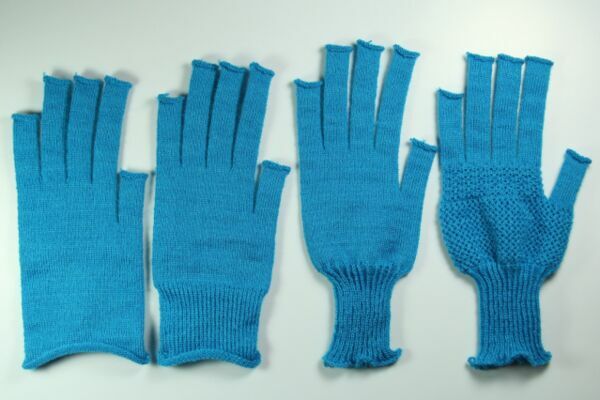
Computer-aided knitting
"New research from the Computer Science and Artificial Intelligence Laboratory uses machine learning to customize clothing designs. The oldest known knitting item dates back to Egypt in the Middle Ages, by way of a pair of carefully handcrafted socks. Although handmade clothes have occupied our closets for centuries, a recent influx of high-tech knitting machines have changed how we now create our favorite pieces. These systems, which have made anything from Prada sweaters to Nike shirts, are still far from seamless. Programming machines for designs can be a tedious and complicated ordeal: When you have to specify every single stitch, one mistake can throw off the entire garment. In a new pair of papers, researchers from MIT’s Computer Science and Artificial Intelligence Laboratory (CSAIL) have come up with a new approach to streamline the process: a new system and design tool for automating knitted garments." [...]

“Qutrit” Experiments Are a First in Quantum Teleportation
"The proof-of-concept demonstrations herald a major step forward in quantum communications For the first time, researchers have teleported a qutrit, a tripartite unit of quantum information. The independent results from two teams are an important advance for the field of quantum teleportation, which has long been limited to qubits—units of quantum information akin to the binary “bits” used in classical computing. These proof-of-concept experiments demonstrate that qutrits, which can carry more information and have greater resistance to noise than qubits, may be used in future quantum networks. Chinese physicist Guang-Can Guo and his colleagues at the University of Science and Technology of China (USTC) reported their results in a preprint paper on April 28, although that work remains to be published in a peer-reviewed journal. On June 24 the other team, an international collaboration headed by Anton Zeilinger of the Austrian Academy of Sciences and Jian-Wei Pan of USTC, reported its results in a preprint paper that has been accepted for publication in Physical Review Letters. That close timing—as well as the significance of the result—has each team vying for credit and making critiques of the other’s work." [...]

Scientists create the world's thinnest gold
"cientists at the University of Leeds have created a new form of gold which is just two atoms thick – the thinnest unsupported gold ever created. The researchers measured the thickness of the gold to be 0.47 nanometres – one million times thinner than a human finger nail. The material is regarded as 2D because it comprises just two layers of atoms sitting on top of one another. All atoms are surface atoms, there are no 'bulk' atoms hidden beneath the surface. It could have wide-scale applications in the medical device and electronics industries, and also as a catalyst to speed up chemical reactions in a range of industrial processes. Laboratory tests show that the ultra-thin gold is 10 times more efficient as a catalytic substrate than the larger gold nanoparticles currently used in industry." [...]
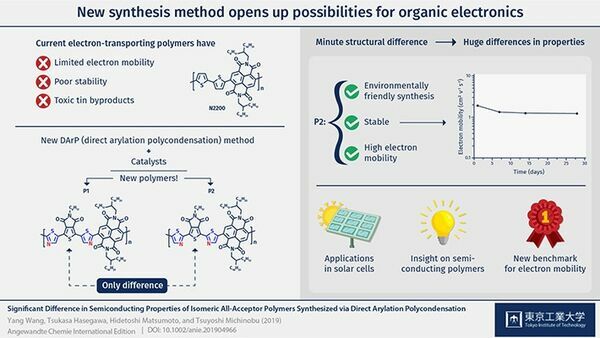
New synthesis method opens up possibilities for organic electronics
"Scientists at Tokyo Institute of Technology (Tokyo Tech) modify a previous synthesis method to create a new semiconducting polymer with remarkable properties which could be used in organic electronic devices such as thin film transistors. Semiconducting polymers, very large chain-like molecules made from repeating sub-units, are increasingly drawing the attention of researchers because of their potential applications in organic electronic devices. Like most semiconducting materials, semiconducting polymers can be classified as p-type or n-type according to their conducting properties. Although p-type semiconducting polymers have seen dramatic improvements thanks to recent advances, the same cannot be said about their n-type counterparts, whose electron-conducting characteristics (or 'electron mobility') are still poor. Unfortunately, high-performance n-type semiconducting polymers are necessary for many green applications, such as various types of solar cells. The main challenges holding back the development of n-type semiconducting polymers are the limited molecular design strategies and synthesis procedures available." [...]
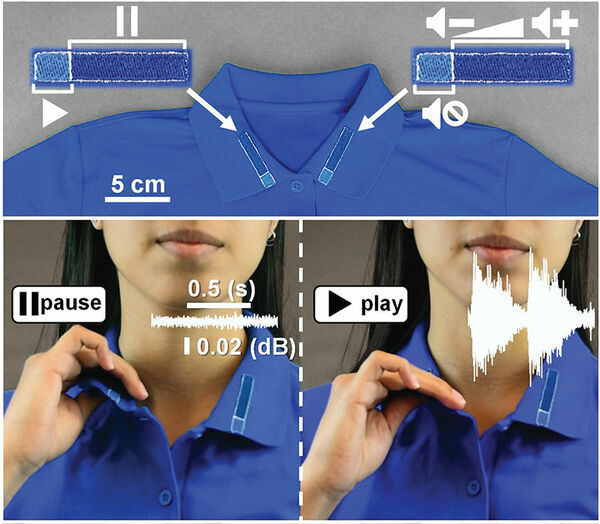
This designer clothing lets users turn on electronics while turning away bacteria
"New rainproof, stainproof technology turns clothing into self-powered remotes A new addition to your wardrobe may soon help you turn on the lights and music – while also keeping you fresh, dry, fashionable, clean and safe from the latest virus that’s going around. Purdue University researchers have developed a new fabric innovation that allows wearers to control electronic devices through clothing. “It is the first time there is a technique capable to transform any existing cloth item or textile into a self-powered e-textile containing sensors, music players or simple illumination displays using simple embroidery without the need for expensive fabrication processes requiring complex steps or expensive equipment,” said Ramses Martinez, an assistant professor in the School of Industrial Engineering and in the Weldon School of Biomedical Engineering in Purdue’s College of Engineering. The technology is featured in the July 25 edition of Advanced Functional Materials. “For the first time, it is possible to fabricate textiles that can protect you from rain, stains, and bacteria while they harvest the energy of the user to power textile-based electronics,” Martinez said. “These self-powered e-textiles also constitute an important advancement in the development of wearable machine-human interfaces, which now can be washed many times in a conventional washing machine without apparent degradation.” Martinez said the Purdue waterproof, breathable and antibacterial self-powered clothing is based on omniphobic triboelectric nanogeneragtors (RF-TENGs) – which use simple embroidery and fluorinated molecules to embed small electronic components and turn a piece of clothing into a mechanism for powering devices." [...]
Projetos Maker
Diversos Projetos interessantes.
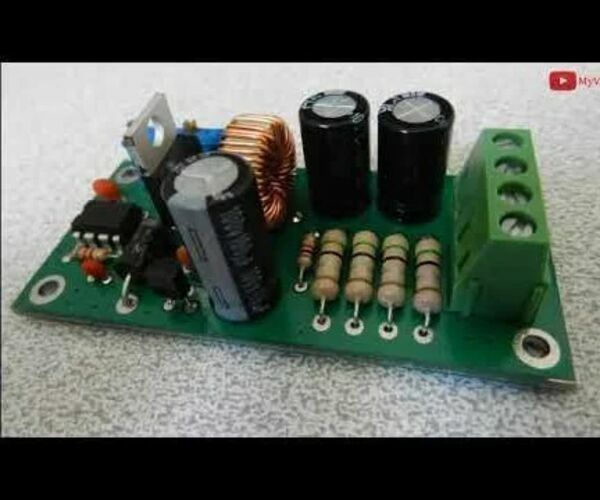
How to Build an Adjustable Switching Power Supply Using LM2576
"Switching power supplies are known for high efficiency. An adjustable voltage/current supply is an interesting tool, which can be used in many applications such as a Lithium-ion/Lead-acid/NiCD-NiMH battery charger or a standalone power supply. In this article, we will learn to build a variable step-down buck converter using the popular LM2576-Adj chip. Features Cheap and easy to build and use Constant current and constant voltage adjustment [CC, CV] capability 1.2V to 25V and 25mA to 3A controlling range Easy to adjust the parameters (optimum use of variable resistors to control the voltage and current) The design follows the EMC rules It is easy to mount a heatsink on the LM2576 It uses a real shunt resistor (not a PCB track) to sense the current" [...]

Emergency Micro Powerbank
"Hello Everybody! I'm Manuel and in today's project I want to show you how to make a tiny emergency powerbank that could potentially save your life! We all know that our smartphone's battery is always out of juice when we really needed it, for example to make an important call or, in the worst case, to call for help or rescue. So, in order to overcame this eternal problem I designed and built a powerbank that you could attach to your keys or throw in a pocket and it will be always ready to charge a little bit of your smartphone battery. Let's do it! " [...]
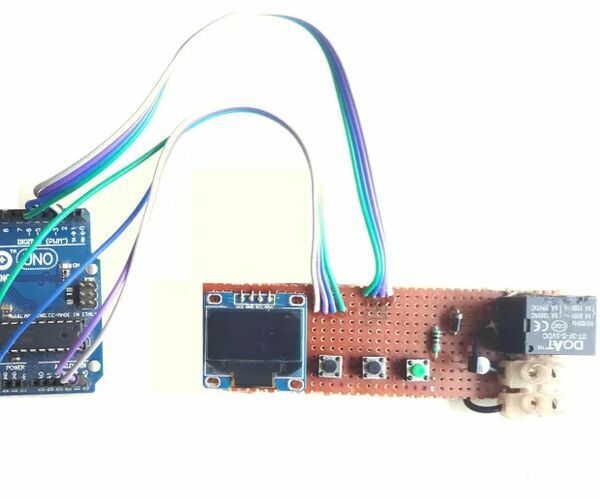
Simple Arduino Timer Switch
"Let's make a simple arduino switch. It is very useful way to run your devices for specific time. Supplies: 1. Arduino Uno 2. Dot matrix PCB 3. OLED 0.96' Display 4." [...]
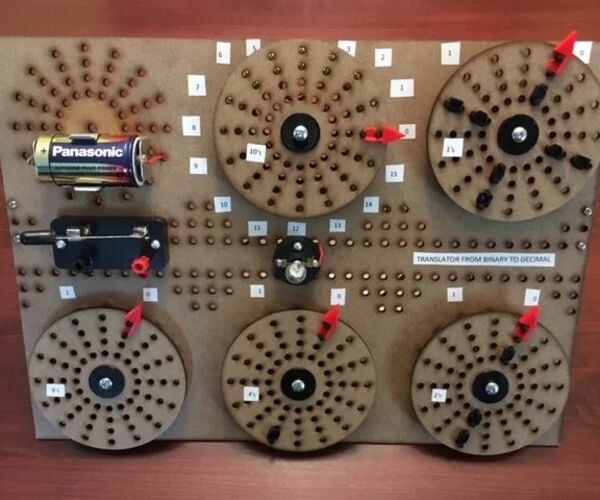
GENIAC (Electric Brain) Replica
"GENIAC, which stood for "GENIus Almost-automatic Computer", was an educational toy billed as a "computer" sold from 1955 through the sixties for about $20. Designed and marketed by Edmund C. Berkeley, with Oliver Garfield, it was widely advertised in science and electronics magazines. GENIAC provided many youths of the day with their first exposure to computer concepts and Boolean logic. Sold as a kit, GENIAC consisted of a Masonite back panel with six areas of concentric perforations, six similarly perforated Masonite disks, and some additional hardware listed in the supplies section below. Slotted brass bolts were positioned on the main back panel in such a way that brass "jumpers" inserted into the underside of the Masonite disks would create electrical connections when the disks were rotated over them. The bolts were wired together along with a battery and some lights to create "programs", basically single purpose "machines"." [...]
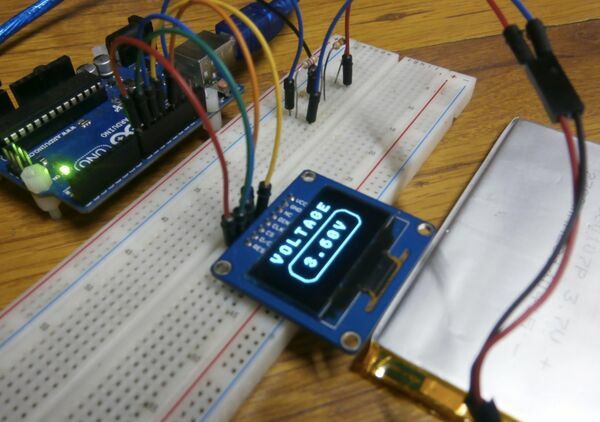
Arduino Voltmeter using SH1106 OLED display
"A voltmeter is an important tool on the workbench of every electronics hobbyist, maker or hardware design engineer. As its name suggests, allows the user to measure the voltage difference between two points. For today’s tutorial, we will look at how you can build an Arduino based DIY voltmeter, for use in situations where you don’t have the standard meters around. Measuring a DC voltage, should probably be as easy as connecting the voltage to be measured to an analog pin on the Arduino, but this becomes complicated when voltages are higher than the Arduino’s operational voltage (5V). When applied to an analog pin, Arduino will not only give a false reading but it could also damage the board. To solve this, today’s project uses the principle of voltage divider such that only a fraction of the voltage to be measured is applied to the Arduino." [...]
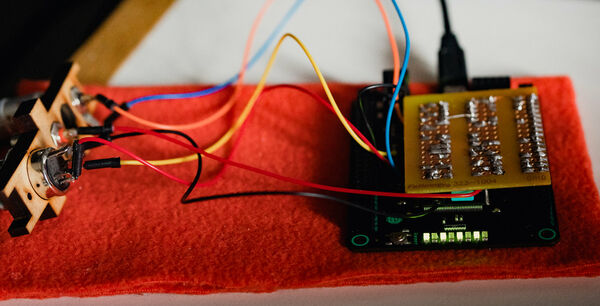
XFM Synthesizer
"XFM is a polyphonic, 32-voice, 6-operator FM synthesizer stereo module that you can build yourself. Essentially, the module receives MIDI messages from a controller/sequencer, produces audio and delivers it via digital (SPDIF) and analog outputs. The sound range XFM can create and its feature set have a very broad intersection with most pure-FM synthesizers of the past (Yamaha DX series, OPL chip series, TX81Z/802/816 modules, etc.). Feature Set 32-voice of polyphony Polyphonic or Monophonic Legato modes 6 operators per voice Variable modulation algorithm 8 waveforms per operator A 6-segment Envelope Generator for each operator 6-segment Pitch Envelope Generator Per-voice LFO with Triangle, Square, Sine, S&H waveform Per-operator adjustable LFO sensitivity for pitch and volume Per-operator adjustable velocity tracking, keyboard tracking Monophonic/Polyphonic portamento Extensive MIDI implementation (pitch bend, mod wheel, aftertouch, sustain, breath ctl, foot ctl, volume, pan, etc.) Auto-panner Stereo Chorus 256 programs memory MIDI in, thru 48kHz samplerate Samplerate-grade modulations Stereo, 24-bit SPDIF digital out Stereo, 16-bit analog out Battery friendly, low power operation Fully programmable (connecting it to a PC via USB) Extremely low latency (< 1ms) The Technology XFM is an FPGA-based synthesizer. The selection of technology for XFM was done in several stages." [...]
PYNQ Controlled NeoPixel LED Cube
"NeoPixels are great fun to work with. LED cubes are also very visually interesting. Let's look at creating a PYNQ-controlled one! " [...]
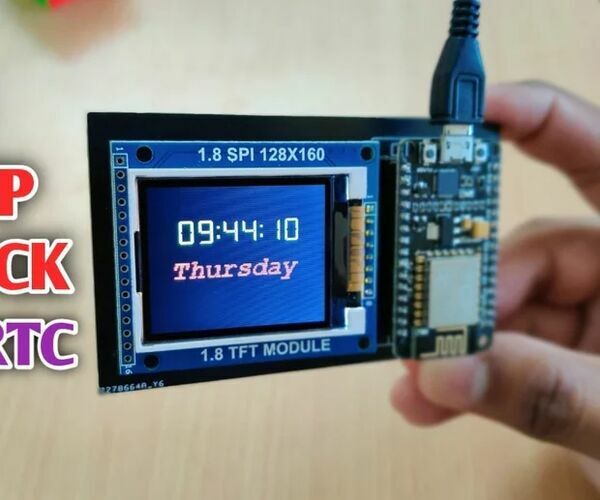
ESP8266 Network Clock Without Any RTC | Nodemcu NTP Clock No RTC | INTERNET CLOCK PROJECT
"In the project will be making a clock project without RTC, it will be taking time from internet using wifi and it will display it on st7735 display. " [...]

Heavy Bass and Treble Circuit
"We want listen music with high bass and with best music sound so today I am going to make a circuit of Bass and Treble that will control the bass and treble of sound. Let's get started, Components required - (1.) Potentiometer - 100K x2 (2.) Ceramic capacitor - 100nf (104) x1 (3.) Ceramic capacitor - 10nf (103) x2 (4.) Ceramic capacitor - 1nf (102) x1 (5.)" [...]

IoT Moon Lamp
"In this instructable I show how to convert a simple battery powered LED lamp into an IoT device. This project includes: soldering; programming ESP8266 with Arduino IDE; making android application with MIT App Inventor. The object of interest is this moon shaped lamp I bought from gearbest. But really this tutorial can be adapted to any low DC voltage device (AC powered devices require additional circuitry). Supplies: Android smartphone (android versions 7-9 tested). Soldering tools." [...]
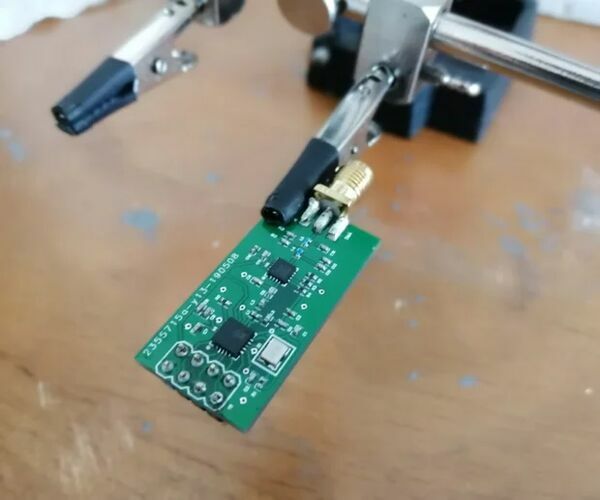
How to Build Your Own NRF24L01+pa+lna Module
"Nrf24L01 based module has been very popular, because it’s easy to implement in wireless communication projects. The module could be found under 1$ with a PCB printed version, or monopole Antenna.The problem with these cheap modules is that they have many issues and become easily defective. Mainly because the IC is not originally made by Nordicsemi, but also because of the poor printing quality of the PCBs. Throughout this article I will show you how to build your own nrf24L01 based module, and how to add PA (Power amplifier ), LNA (Low noise amplifier) to extend range and output power. " [...]
SunTracker 2 Revision 3
"A learning platform for optimizing solar systems energy output through alignment to our suns path across the sky. This is a photovoltaic (PV) solar tracking controller prototype. Solar trackers adjust the PV panel direction, to keep solar panels perpendicular to the sun, maximizing the power output. The increased power output varies, but can be in range of 15~40%, which would be substantial. For places with limited space where increasing solar panel size is not an option, tracking may give the extra energy. I designed and built this prototype to validate basic functionality by tracking the suns horizontal movement (Azimuth angle) across our sky." [...]
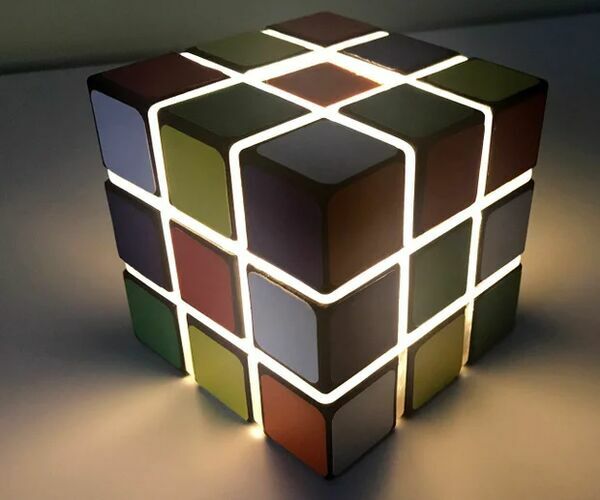
Wireless LED Cube Light
"This time Ill show you how I made very cool looking glowing cube from Rubiks Cube and some cheap electronics. How I did it - you can check by looking DIY video or you can follow up instructions bellow. For this project you will need: Materials: Rubiks Cube (at least 9 by 9 by 9cm) Ping pong ball 2 pcs 18650 Lithium Ion cells (or other 3.7V lithium battery) USB power bank case with electronics 5V LED strip 4mm poly-carbonate (Acrylic) CA glue Hot glue Tools: Drill and bits Table saw, band saw jig saw or other cutting tool to cut acrylic Rotary tool Hot glue gun Soldering Iron Sand paper (320 grit) Utility knife" [...]
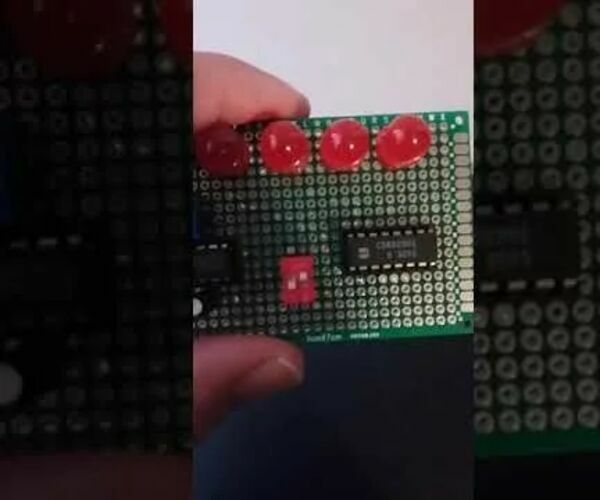
4 Bits Binary Counter Up/Down
"The counter is a 4 bits binary counter up/down. That is, this counter can counter from 0 to 15 or from 15 to 0 because it counts either up or down. The project is a binary counter made with a 4029, a 555, and 4-10 mm LED mainly by using a double dip slide switch to select up or down. " [...]
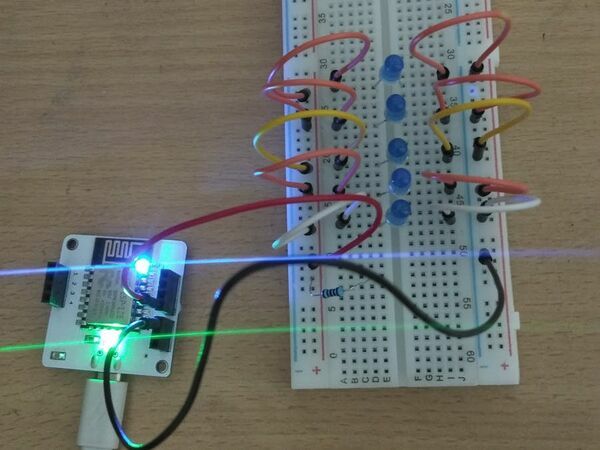
LED Brightness Control Using Bolt IoT and Python
"We created a GUI using Python tkinter which have buttons to turn on and turn off the LEDs. There is a scale to set the brightness of LED. The Story In past days people use different kinds of lights for e.g. bright light while they work and low light while they sleep or watch movies. So is it possible so that we need not to use many lights and can change the brightness according to our requirement? Yes it is possible." [...]
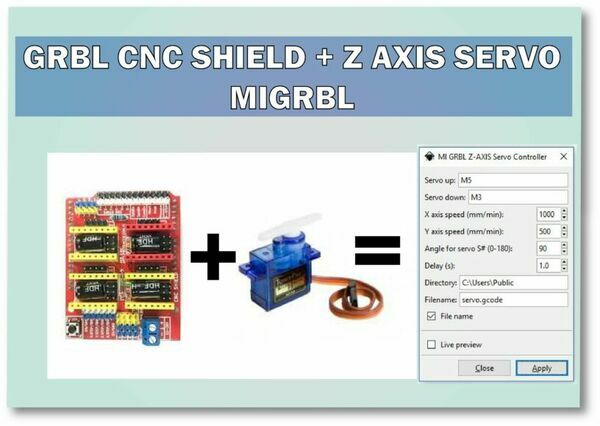
GRBL CNC Shield + Z Axis servo MIGRBL
"Hello friends, In this post I’ll give a detail tutorial on how we can attached Servo to GRBL CNC shield and how we can generate Z axis servo friendly G-code by using MIGRBL inkscake extension. In this way we can build a GRBL based CNC pen plotter machine or CNC drawing machine. GRLB is the open source firmware freely available for every one, GRBL is used as firmware for CNC machine. GRBL CNC Shield is used as controller for CNC machine, GRBL shield and GRBL firmware is very best for 3 axis stepper CNC machine. But when we choose GRBL to build 2.5 axis CNC machines like pen plotter or CNC drawing machine we face a problem that there is not any provision to connect Servo to GRBL CNC shield. Also default GRBL firmware also not have any facility to control servo motor for Z axis, but we have a hack version of GRBL version which support servo control." [...]

Disco Band Camp Jacket
"Put an Adafruit Gemma M0 to work as you attach 120 Adafruit NeoPixels to the lapels of a vintage band jacket. In a nutshell, this project starts by soldering small sections of NeoPixels into two longer strips and arrange them into a matrix formation. Add a clicky button to a Gemma M0 to showcase some beautiful animations and pick a brightness setting. Connect the two strips of NeoPixels to the Gemma M0, utilizing Mark Kriegsman's special XY mapping code to tell the Gemma the location of each pixel. Finally, protect the strips from the elements, and attach it to a costume jacket. Whether you’re headed to TTITD (that thing in the desert aka burning man) or leading a marching band, this wearable is sure to make you the star of any event." [...]
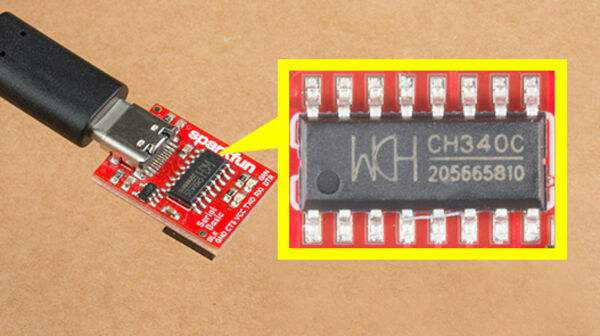
How to Install CH340 Drivers
"Introduction In this tutorial, we'll show you how to install CH340 drivers on multiple operating systems if you need. The driver should automatically install on most operating systems. However, there are is a wide range of operating systems out there. You may need to install drivers the first time you connect the chip to your computer's USB port or when there are operating system updates. Alright, let's get to work! You can visit the next section to learn more about the CH340 and why you need the drivers, or you can skip straight to the operating system of your choice!" [...]
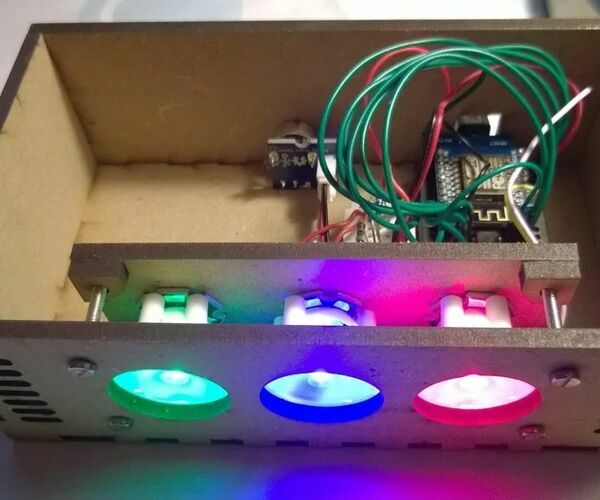
Arduino Controlled RGB-LED-Lamp #phablabs
"Build your own RGB Lamp providing 3 bright light cones in red, green and blue (or other colors) which turn on and off in a row. The speed of the light show can be manually controlled by a turning knob which connects to a potentiometer (adjustable resistor). At low speed, the light cones visibly light up one after the other; at maximum speed they appear to shine at the same time, which generates some interesting color mixing: When you put your hands between the lamp and a white wall, new colors and colorful shadows appear! Properties of this workshop: Timeplanning: Total: 3h 1. Explaining of the photonics concept of 'colours' and 'basics of electronics': 20 minutes 2. Controlling and implementing electronics: 40 minutes 3." [...]
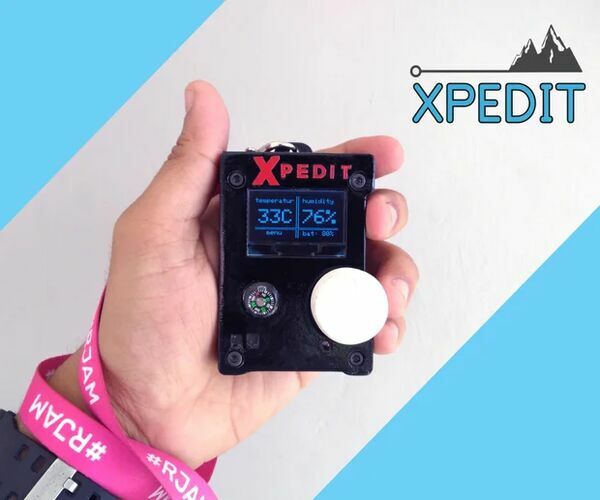
Xpedit - Atmosphere Monitoring Device for Hiking and Trekking
"When you are planning to do an adventure journey or trekking to the wild, it is essential to have a device in your backpack that helps you to understand the environment. For my upcoming adventure trip, i planned to build a handheld device that helps me to monitors temperature, humidity, air pressure, and altitude as well as an alarm can be set for any of the parameters go beyond a user-defined threshold value. The device is powered with 1000maH lipo battery, with a backup of 72 Hours continues running! I made this device smaller in size, smarter to use, looks cool in your hands and durable in outdoor. I keep the budget within $18! Component and Parts : 1 x Atmega 328P (TQFP) 1 x TP4056 1 x 20mhz Resonator 1 x Rotary encoder 1 x BME280 Module 1.3" 128 x 64 OLED Display Module 1 x Buzzer -3V 6 x 10K 0805 Resistor 2 x 1K 0805 Resistor 1 x 1.2K 0805 Resistor 1 x 0.1mF 0805 Capacitor 2 x 1mF Capacitor 1 x 10mF Capacitor 1 x Micro USB Port 1 x 1000maH 3.7v Lipo Battery 1 x 2x3 Header Pins 4 x M3/6mm Threaded inserts 1 x 12mm compass meter 4 x M3 15mm Screws Tools: Soldering Iron Multimeter Allen key 3mm Screw Drivers Tweezers Files Supplies: Spray Paint (any color for your choice) Spray paint clear coat Sandpapers, Gloves, Mask, and Googles Softwares: Autodesk Eagle Autodesk Fusion360 Arduino IDE Machines: 3D Printer Vinyl Cutter Machine (Not necessary, Just for cutting logo)" [...]
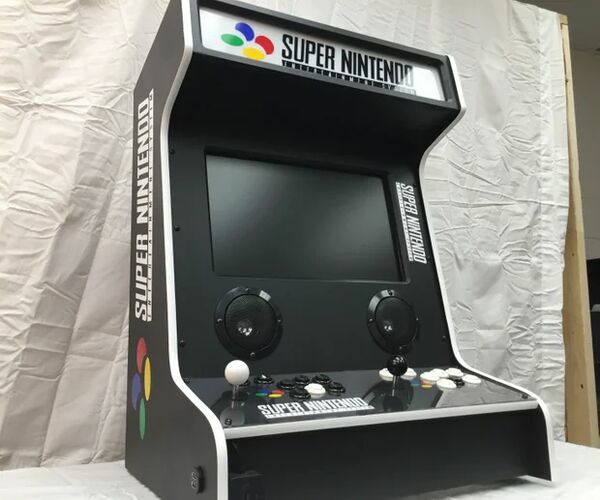
Custom Bartop Arcade Cabinet
"Hello and thank you for checking out my first Instructable on how to build a custom bartop arcade cabinet! Arcades have really started making a comeback as we get older and want to enjoy some nostalgic retro gaming. It makes for a great opportunity to create something that you can proudly show off to your friends, guests, and kids! I personally find it much easier to learn from watching "How To" videos, instead of reading; so I have created three videos that document my steps, what I learned, and how you can make one for yourself! As a quick note, I am only demonstrating construction and installation. I will not discuss how to set up your Raspberry Pi." [...]

The TCP Packet Badge
"A badge that features an entire TCP packet design with funky LED show and an "Internet Explorer" mode that slows all of it down. The Design I was asked by NotSoSecure to think of a badge that makes TCP packets cool and was offered brownie points if there's cool functionality to it. We had the badge idea instantly to round the TCP packet with LEDs and put 8 colourful LEDs in the middle to denote Xmas attack. Initially, we considered the development with only few ICs and basic components. But as we started the development, we realised it'd be much cooler if badge has ability to reprogram. And thus, we rewrote entire schematics with ATmega8A at its heart." [...]
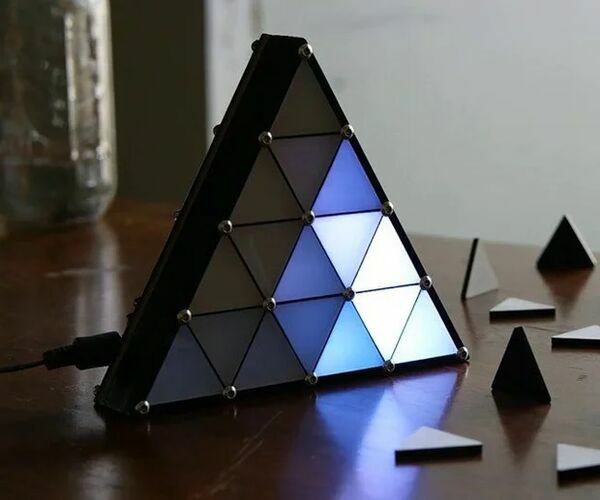
Making a Great LED Triangle
"Triangles are cheap these days. Your mobile phone can draw ten million of them in a second, and they'll be quite alright. I wanted to build something different. A triangle capable of being very dim or very bright. A triangle with tangible edges, a precise geometric lattice around soft pats of warm light. In early 2013, I was prototyping techniques for building LED light sculptures with a very geometric look." [...]
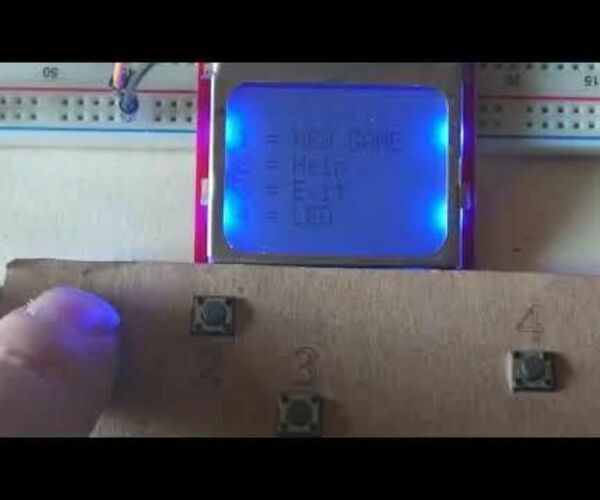
Brick a Bottle or Three
"A little game to show how a PCF8574 can be used with a Nokia 5110 screen. " [...]
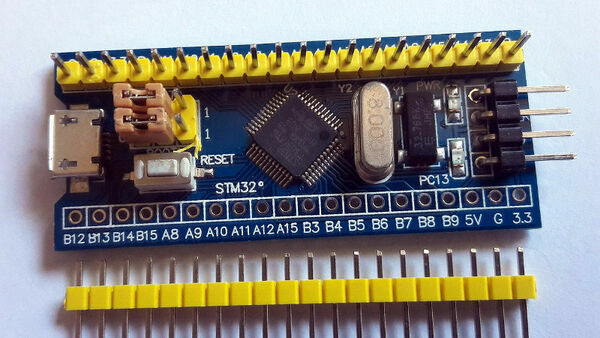
Morse-Tutor
"An inexpensive device for learning Morse Code, using STM32F103C "Blue Pill" microcontroller board, 2.2" ILI9341 TFT, rotary encoder, and piezo element. Based on "Morse Code Tutor" by Jack Purdum W8TEE. Full description and 8-part tutorial available at w8bh.net Folders in this project: "MorseTutor" contains the latest source code. "Tutorials" contains sketches for the 8-part tutorial. "Troubleshooting" has sketches for hardware validation (screen, encoder, etc). "KI4PSR-PCB" is code for KI4PSR's printed circuit board, and "Book texts" contains ASCII text for a few classic books." [...]
That's all Folks!



